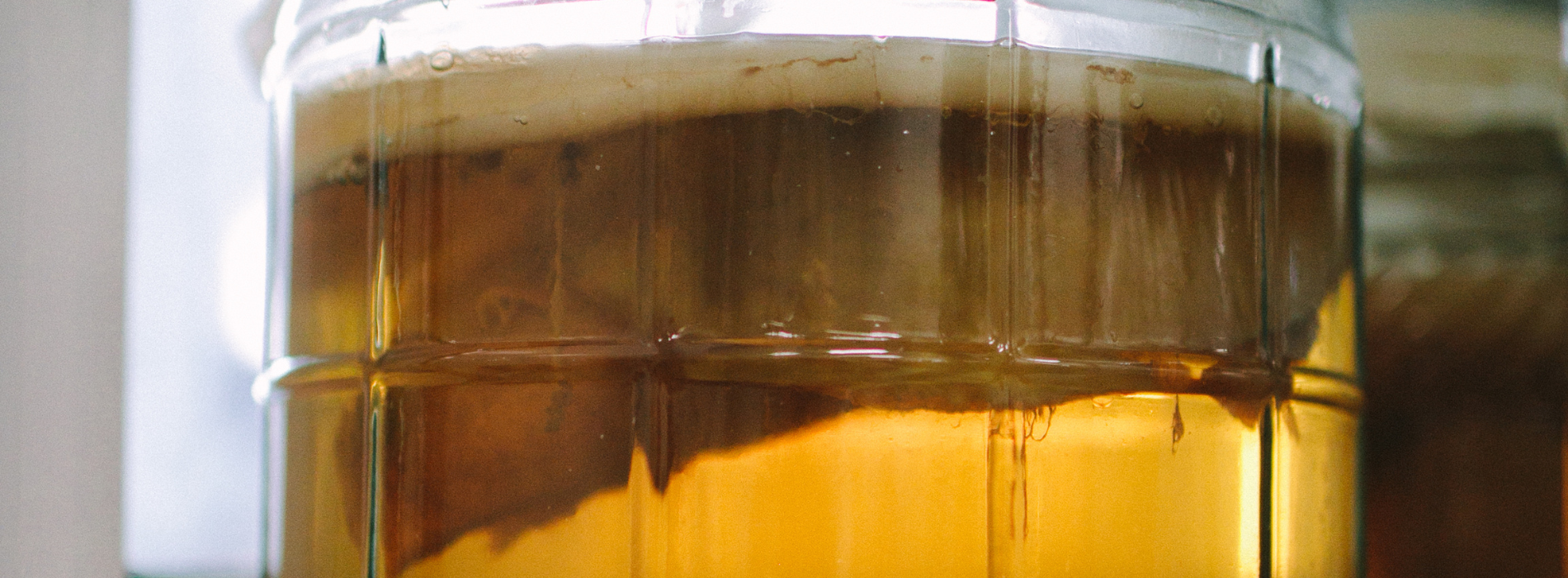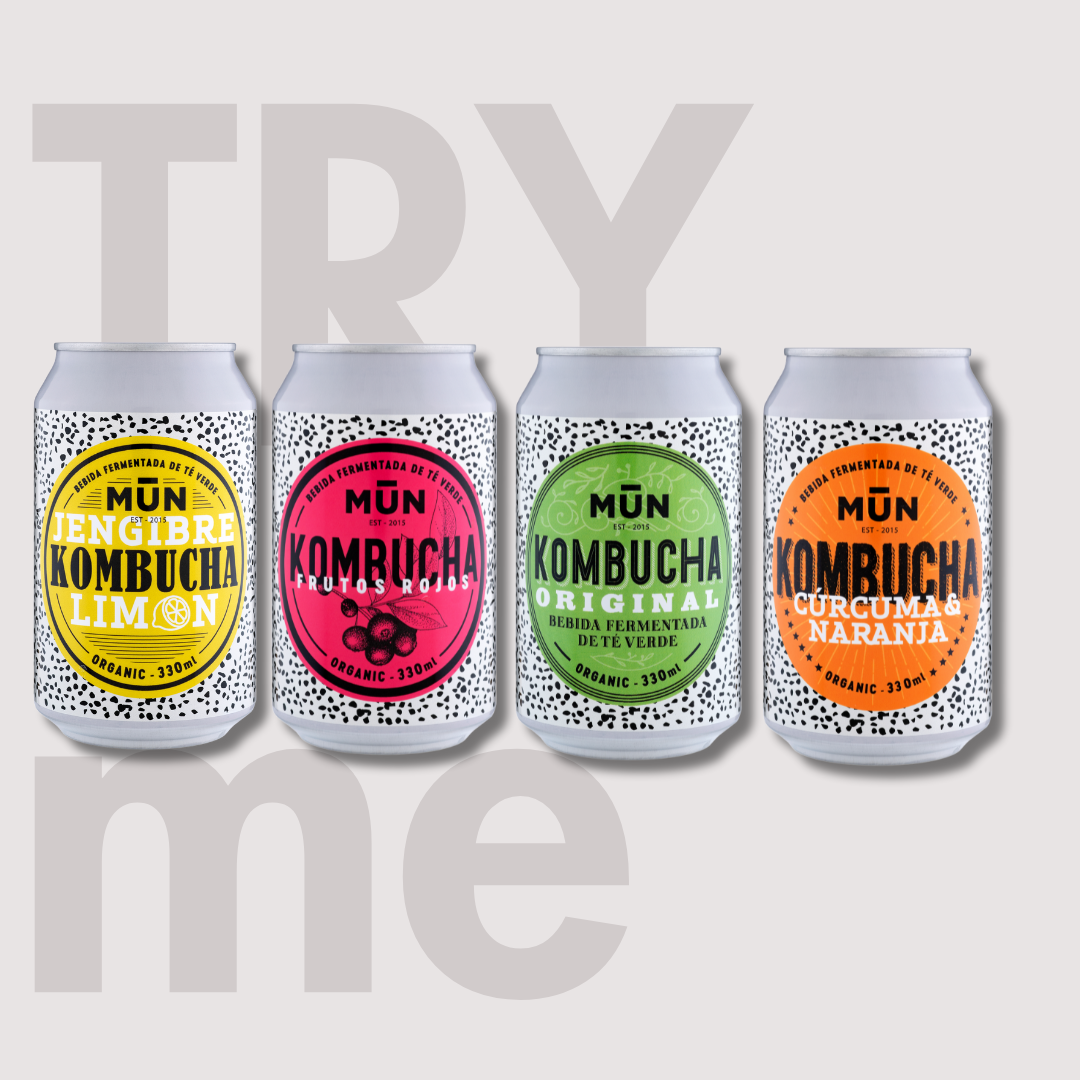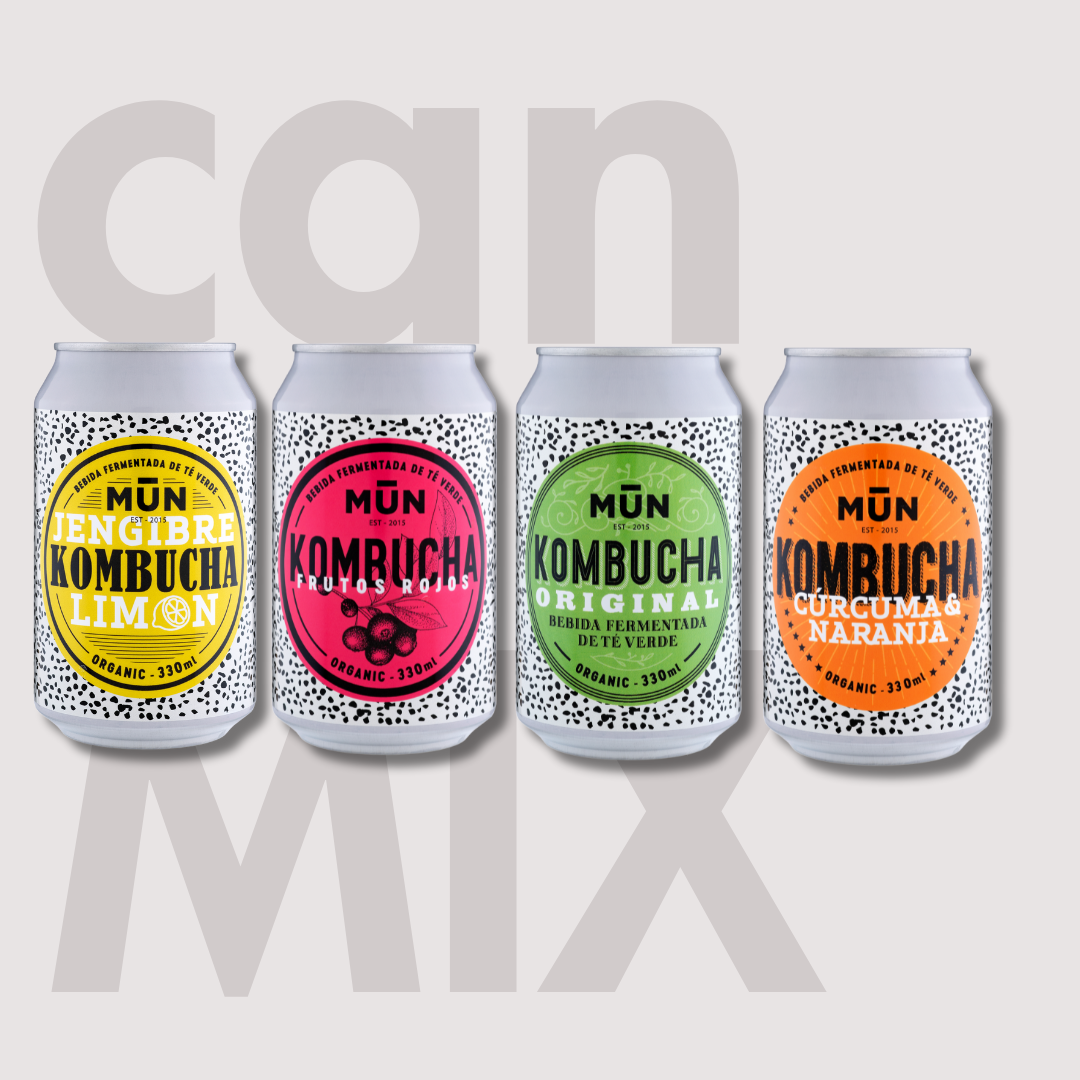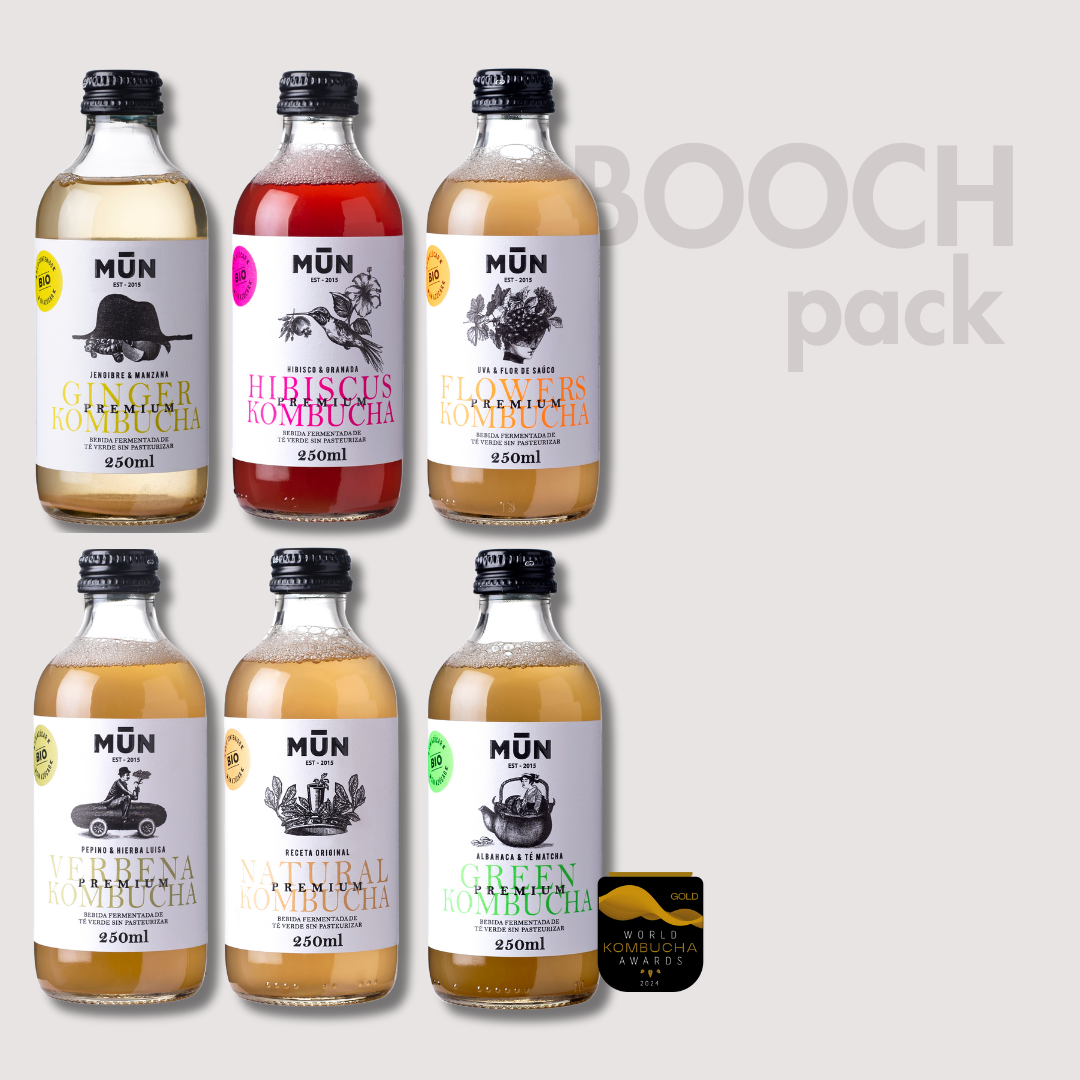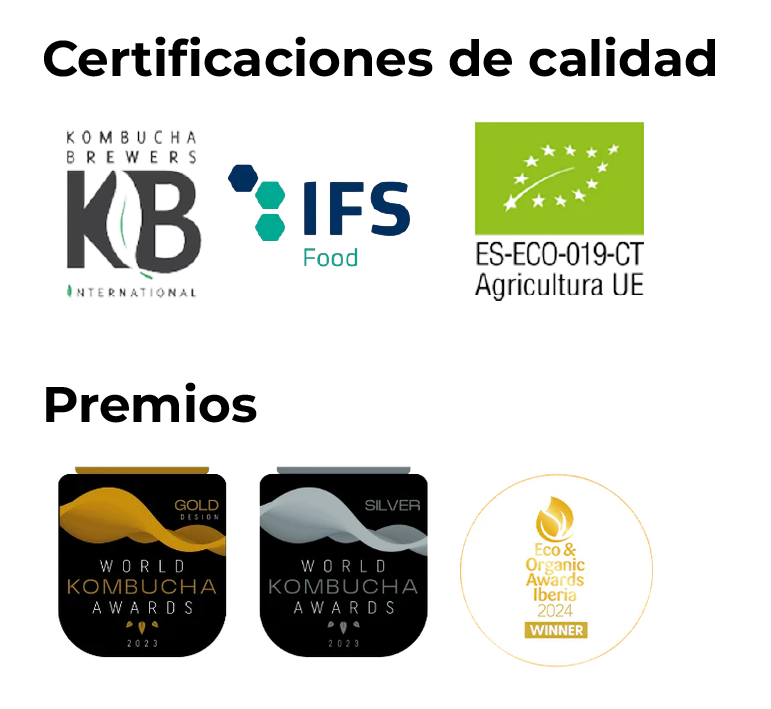Everyone talks about it and you see it everywhere, but what is kombucha? The simplest definition is that it is fermented tea. Going a little further, we can explain that it is a bubbled and non-alcoholic drink that is prepared from tea, with a taste that will surprise you because your taste buds have rarely tasted it before.
Predecessor of current soft drinks, kombucha has healthy properties, according to several scientific articles. Kombucha is rich in vitamins of group B (B1, B2, B3, B6, B9, B12), C, D, E and K; enzymes, organic acids, minerals (iron, potassium, zinc, manganese, copper, calcium and magnesium), yeasts, polysaccharides and polyphenols, which act as antioxidants and therefore protect cells. Among others, the consumption of kombucha helps digestion and the absorption of nutrients and contributes to the detoxification of the body, while activating immunity.
The most fashionable drink has an incredible past. Although its origins are quite uncertain because there is no documentation to prove it, there is evidence of its consumption in Asia for at least 2,000 years. In the year 221 aC. He already took the highest Chinese aristocracy and, some 200 years later, he gained world fame when he cured an emperor of Japan of his digestive illness. It was then that he received the nickname elixir of eternal youth. The well-known samurai took it to have more energy for their battles. Kombucha spread from Asia to Europe and later to the Americas and around the world. For many years it remained alive thanks to its homemade elaboration. In recent times, it has gained momentum and has become a drink that is loved by those who take care of their health.
Microorganisms with a lot of power
The procedure for making kombucha is quite simple. It begins with an infusion of tea, usually green or black, which is sweetened. A symbiotic colony of yeasts and bacteria, mother or SCOBY (Symbiotic Culture of Bacteria and Yeast) is added to this initial mixture. Some microorganisms that work in a coordinated way to carry out a fermentation process and obtain a naturally effervescent drink, with a sweet, acid and vinegary taste, which, in addition to providing you with health in abundance, will improve your general well-being.
In Spain, Mūn Ferments was the first company to put on the market a kombucha packaged in glass, with 100% natural ingredients, top quality and certified organic. However, its main distinguishing feature was that, despite not being pasteurized, it is absolutely stable at room temperature due to the minimal amount of residual sugar it contains.
A careful and patient process
To make the Mūn kombuchas, we start with an infusion of green tea of the Lung Ching variety, the most organically grown in the world. It is only collected in spring and is highly appreciated by experts. Ecological cane sugar is added to this, which will be the fuel to make fermentation possible. A long and careful fermentation, which ensures that the Mūn kombuchas have a minimum amount of residual sugar. A fact that, on the one hand, benefits the consumer, who saves a lot of sugar with all that this means for his health and, on the other, the planet, due to the saving of CO2 emissions into the atmosphere -up to 180 times less than the competition – which implies the fact that it is not necessary to store them in the fridge.
Mūn fermented teas are ideal to replace soft drinks. Always served cold, they can be taken alone to appreciate their natural smooth bubbles, or adding fruit or vegetable juices. The most daring do not hesitate to incorporate them into ingenious cocktails with or without alcohol.
AUTHENTIC KOMBUCHA. HOW TO GET TO KNOW IT?
The world of fermented foods is booming. Although this system of food transformation is as old as mankind, there are many people who speak of the health benefits of its consumption. Taking advantage of this trend, many brands have emerged recently that are dedicated to the commercialization of this type of food. If we narrow the field of vision and refer only to kombucha, since Mūn Ferments came on the market in 2015, companies have been emerging that also sell fermented tea.
There are no regulations governing what can be marketed under the term kombucha. The Kombucha Brewers International, or KBI, where Mūn Ferments has been a member since 2017, has a code of good practices, where its associates have detailed the different types of kombucha that can be brewed. Thus, we can find:
Traditional kombucha: Traditional beverage obtained from the fermentation of a sweetened tea infusion, SCOBY, starter liquid, with a sour and sweet taste at the same time, with bubbles and very low alcohol content, and without any further processing at the end of fermentation. Natural flavorings (fruits, herbal teas, etc.) can be added. This traditional kombucha is capable of creating a natural SCOBY if left at room temperature and with the presence of oxygen.
Kombucha: a beverage obtained from the fermentation of a wide range of plants, SCOBY/starter, water and fermentable sugar. Flavorings can also be added. Depending on the process used, it may or may not generate SCOBY at room temperature.
Kombucha soft drink: or processed kombucha includes any type of kombucha that has undergone a process outside the traditional method. Some examples of these processes would be pasteurization, dealcoholization, filtration to change aroma or appearance, sterilizing filtration or dilution.
Since all this information does not always appear visibly on the product label, the best thing to do is to analyze a series of aspects that will help us validate if what you have in your hands is or is not a quality and authentic kombucha. Reviewing the packaging, the label and the liquid will surely help you when you are in front of a Mercadona or Carrefour fridge, and you doubt whether to take that kombucha home.
The container of a kombucha
Currently, kombucha is on the market in 4 types of containers. Each one provides some advantages, but also some drawbacks:
- In glass: A kombucha packaged in glass, a priori, already offers a good guarantee, since it is the best material to be in contact with the kombucha. The glass is inert and does not transfer particles to the kombucha that we will end up drinking. In addition, it is absolutely recyclable and reusable.
- In a can: The aluminum can can be a good solution for kombucha, but we must not forget that there is a plastic coating inside, which can sometimes include bisphenol A (BPA). BPA is a substance that is added to obtain better properties, but at the same time it is an endocrine disruptor, that is, it is capable of altering our hormonal cycle. BPA is a xenoestrogen, and behaves in the body like a female hormone, which can have serious consequences on the consumer's health. For this reason, it is best to make sure that the packaging clearly indicates that the can does not contain BPA, as is the case with MUN Kombucha in a can.

- In plastic : Kombucha is a very acidic drink, with a pH around 3, so a plastic container cannot guarantee that there is no migration of particles from the container to the drink. For this reason, it is best to avoid drinking kombucha in plastic containers.
- Keg : Bulk kombuchas are stored in kegs or kegs. The best solution is stainless steel barrels, but sometimes, to avoid the return of packaging, single-use plastic barrels are used. The barrels we use at Mun Ferments contain a BPA-free aluminum inner bag, so there is no migration of particles.
How to Read the Label on a Kombucha Bottle
The label on a bottle of kombucha can include a lot of information or very little. By interpreting its content we can find out whether or not it is a good kombucha. To do this we will have to read carefully:
- The ingredient list
- The nutritional table
- The preparation method
- Claims and other entries
The list of ingredients for a good kombucha
The ingredients on a label always have to be ordered from largest to smallest, depending on the quantity used. It is only mandatory that the % of those mentioned on the label appear. A good kombucha should include at least this list: water, sugar, tea and kombucha culture . To these you can add any fruit, root or infusion used to flavor, such as ginger, turmeric, lemon or pepper, to name a few.
Always doubt a kombucha that contains ingredients that do not fit into the traditional production process. Soda water? What would be the point of heating sparkling water to prepare the tea infusion? You are welcome. Well, this is already a clue that it is more of a soft drink than a good traditional kombucha.
To make kombucha, yes or yes, it is necessary to use sugar, since it will be the fuel that yeasts and bacteria will use to manufacture organic acids. When you see that ingredients such as steviol glycosides (or E-960) or erythritol appear on the list, these are sweeteners that are added with the aim of making it more palatable, more palatable to the palate of the general public. Be careful and don't let anyone fool you.
The nutritional table of a kombucha
It is usually scary, and even more so when you are on the good side of your diet, when a product contains sugar as an ingredient. In the case of kombucha, it is a must. No sugar, no kombucha. The microorganisms that make fermentation possible use it as fuel to carry out the process. The crux of the matter is that the preparation has been rigorous and as careful as possible to ensure that these microorganisms consume practically all of the sugar and convert it into super-healthy organic acids . Patience and time versus immediacy. A slow drink, with a long fermentation , will guarantee this point.
A kombucha with more than one gram of sugar per 100 ml will surely cost less to drink for those who are not initiated, but we also assure you that it will be less healthy than what they sell it for.
An additional trick? If it is artisanal and, furthermore, does not need a refrigerator, you have found your kombucha! As long as you make sure it is not pasteurized. The less sugar it contains, the less cold it will need to be preserved.
Be very careful with nutritional tables in which carbohydrates differ from sugars. What is clear is that the sugar does not evaporate and that it remains somewhere. If there is a very important difference, think that it is not clean data at all. In other foods, the difference could be explained by the starches they contain, but in kombucha this does not happen.
How and with what did they make it?
An authentic kombucha must have followed the traditional brewing method. It is essential that it has started from a tea infusion (tannins are essential) that has been allowed to ferment with a colony of microorganisms, the famous SCOBY .
The ingredients it contains must be natural , rule out kombucha with concentrated ingredients, flavorings and colorings. It is also important that the origin of these ingredients is organic. The organic seal that appears on a label is the guarantee that the product does not contain pesticides or GMOs.
Your palate will also help you rule out. If it reminds you of that candy or that gum that you once consumed, it is most likely not as natural as they sell it.
Always look for natural, unpasteurized kombucha
Heat and kombucha should only be together during the beginning of the brewing process. Subjecting the drink to pasteurization will only eliminate from the scene those natural probiotics that have managed to emerge during its production and which are precisely the ones that give it a good part of its properties. If it is not filtered, in addition, you may be lucky enough to see a little SCOBY (Symbiotic Colony of Yeast and Bacteria) that has made it possible for the magic of fermentation to turn what was only a tea infusion into a drink loaded with healthy properties .
We have very good news. All of these conditions are met by Mūn Ferments. 100% natural and organic ingredients , local as much as possible, and a production process based on research, achieve the healthiest kombucha . With a long fermentation of up to a month , they manage to contain 1.8 grams of sugar per 100 milliliters at most.
Place your order and enjoy it as soon as possible. You can find it in more than 8,000 physical points of sale and in our online store

